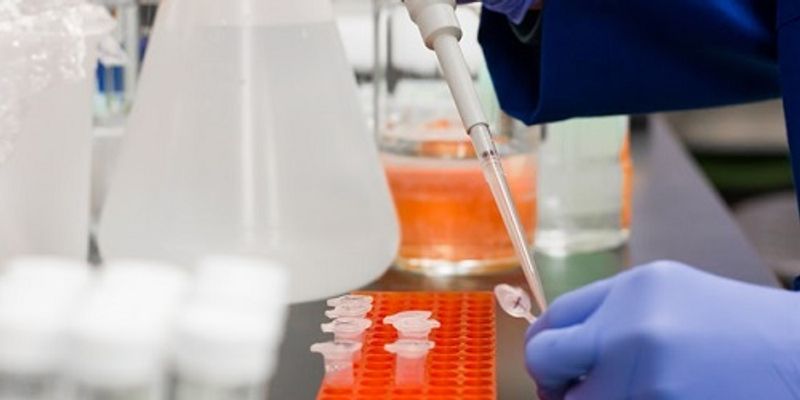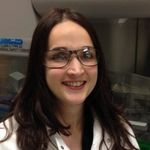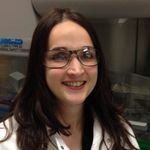Cell Isolation
Cell isolation is the process of separating individual cells from a block of tissue using different techniques. This process is valid for cells which do not exist in a separated form, but in a complex and solid system.
-
NOV 16, 2016 | 4:00 PMCulture systems for pluripotent stem cell (PSC) expansion enable generation of a nearly unlimited pool of cells for downstream differentiation, disease modeling, drug discovery, and therapeut...OCT 05, 2016 | 7:30 AMThe talk will first report on a new patented method of counting CTCs based on the metabolism of tumor cells, that favors acidification of their near environment. In order to maintain the acid...Speaker: Giacinto Scoles, PhDSEP 08, 2016 | 12:00 PMThis presentation will be demonstrating several different approaches to explore the diversity, function, and ecology of microbial communities. In Metagenomics, the sequencing of DNA dir...SEP 08, 2016 | 7:30 AMOur speaker, Wenjie Xu, Ph.D., will present his publication data demonstrating how nCounter® technology can advance your infectious disease research faster and more accurately with unprec...AUG 30, 2016 | 8:00 AMYears of significant effort can go into generating key proof of concept data to support moving bench research to clinical development.Yet, much work remains in order to transition from POC to...AUG 30, 2016 | 8:00 AMAccess this training to learn more about the evolution of pluripotent stem cell culture systems and which solution is best for your PSC culture goals....Speaker: Rhonda Newman, PhDPresented at: 4th Annual 24 Hours of Stem Cells™ virtual event
Sponsored By: Thermo Fisher Scientific, Thermo Fisher ScientificAUG 30, 2016 | 8:00 AMIn the last 10 years, PCSK9 emerged as a promising target for the treatment of autosomal dominant hypercholesterolemia (ADH). With the emergence of induced pluripotent stem (hiPS) cells and f...AUG 30, 2016 | 8:00 AMUsing human pluripotent stem cells as a screening platform, we have identified a novel cell surface maker that identifies foregut endoderm progenitors in pancreas and liver. We have sho...AUG 30, 2016 | 8:00 AMThe isolation of human embryonic stem cells (hESCs) and the discovery of human induced pluripotent stem cell (hiPSC) reprogramming have sparked a renaissance in stem cell biology, in vitro di...AUG 30, 2016 | 8:00 AMWe work in the framework of the Human Induced Pluripotent Stem Cells Initiative (HipSci) project, funded by the Wellcome Trust and MRC. We provide a dedicated laboratory space for collaborati...JUN 23, 2016 | 11:00 AMDATE: June 23, 2016 TIME: 11:00am Pacific time, 2:00pm Eastern time T cells as part of the adaptive immune system play a central role in cell-mediated immunity. Their link to ...JUN 02, 2016 | 8:00 AMSELEX is a process that selects DNA or RNA from a random library of sequences based on their affinity for a target molecule. These high affinity ligands, called apta...MAR 29, 2016 | 8:00 AMRecent advances in next-generation sequencing (NGS) have helped to accelerate the pace of discovery in the field of genetic disease research and testing. The ability to analyze multiple genes...Speaker: Brian Meyer, PhD , Robert Sebra, PhDNOV 17, 2015 | 8:00 AMDATE: November 17th, 2015TIME: 8am PDT, 11am EDT, 4pm GMTBiobanks provide important capacity to collect large genomic data sets intended to enable the study of genetic signatures of an...OCT 08, 2015 | 8:00 AMDuring the development of oral cancer (OC), cancer-associated fibroblasts (CAFs) create a supporting niche by maintaining a bidirectional crosstalk with cancer cells, mediated by classically ...Speaker: Simona Principe, PhDPresented at: Beckman Coulter Life Sciences Virtual Trade Show
Sponsored By: Beckman Coulter Life Sciences, Beckman Coulter Life SciencesOCT 01, 2015 | 9:30 AMBackground: The extracellular vesicle (EV) research field has dramatically increased in the last five years. Using a high-speed flow cytometric sorter, EVs may be isolated at high...Speaker: Carley Ross, PhDPresented at: Beckman Coulter Life Sciences Virtual Trade Show
Sponsored By: Beckman Coulter Life Sciences, Beckman Coulter Life SciencesSEP 03, 2015 | 12:00 PMOxford Nanopore's MinION is a small, portable USB-powered sensing device which is powered by nanopore technology. It is adaptable to the analysis of DNA, RNA, proteins or small molecules, and...SEP 02, 2015 | 6:00 AMManaging microbial contaminants is critical during the manufacturing of biologics, food and beverage to ensure that products meet the high quality product standard as well as staying complian...MAY 11, 2015 | 1:00 PMExtracellular vesicles (EVs) include the exosomes (30-100 nm) that are produced through the endocytic pathway via the multivesicular bodies and the ectosomes (100-1000 nm) that are released t...Speaker: Suresh Mathivanan, PhDPresented at: Beckman Coulter Life Sciences Virtual Trade Show
Sponsored By: Beckman Coulter Life Sciences, Beckman Coulter Life SciencesMAR 19, 2015 | 7:30 AMTraditional psychiatric textbooks describe schizophrenia as a clinical enigma of unknown aetiology. However, this is no longer true. We now know a great deal about the risk factors, or contr...DEC 16, 2014 | 8:00 AMSingle-cell analysis is one of the most rapidly growing fields in biomedical research that is significantly expanding our understanding on the biologic characteristics of various diseases. F...Speaker: Filippos Porichis, PhDOCT 30, 2014 | 9:00 AMBoth cell free DNA (cfDNA) and circulating tumor cells (CTC) represent important possible templates for mutation analysis of clinical samples. Each template has different theoretical advantag...Speaker: Paul W. Dempsey, PhDOCT 29, 2014 | 12:00 PMObesity is associated with an aggressive subtype of breast cancer called basal-like breast cancer (BBC). Using C3(1)-TAg mice, a genetically engineered mouse model that resembles human BBC, w...Speaker: Liza Makowski, PhDAUG 20, 2014 | 8:45 AMIn 2010, our team of synthetic biologists announced the creation of a bacterial cell that had a chemically synthesized genome. To build this synthetic Mycoplasma mycoides JCVI 1.0 we had to d...
NOV 16, 2016 | 4:00 PM
Culture systems for pluripotent stem cell (PSC) expansion enable generation of a nearly unlimited pool of cells for downstream differentiation, disease modeling, drug discovery, and therapeut...
OCT 05, 2016 | 7:30 AM
The talk will first report on a new patented method of counting CTCs based on the metabolism of tumor cells, that favors acidification of their near environment. In order to maintain the acid...
Speaker:
Giacinto Scoles, PhD
SEP 08, 2016 | 12:00 PM
This presentation will be demonstrating several different approaches to explore the diversity, function, and ecology of microbial communities. In Metagenomics, the sequencing of DNA dir...
SEP 08, 2016 | 7:30 AM
Our speaker, Wenjie Xu, Ph.D., will present his publication data demonstrating how nCounter® technology can advance your infectious disease research faster and more accurately with unprec...
AUG 30, 2016 | 8:00 AM
Years of significant effort can go into generating key proof of concept data to support moving bench research to clinical development.Yet, much work remains in order to transition from POC to...
AUG 30, 2016 | 8:00 AM
Access this training to learn more about the evolution of pluripotent stem cell culture systems and which solution is best for your PSC culture goals....
Speaker:
Rhonda Newman, PhD
Presented at: 4th Annual 24 Hours of Stem Cells™ virtual event
Sponsored By: Thermo Fisher Scientific, Thermo Fisher Scientific
Sponsored By: Thermo Fisher Scientific, Thermo Fisher Scientific
AUG 30, 2016 | 8:00 AM
In the last 10 years, PCSK9 emerged as a promising target for the treatment of autosomal dominant hypercholesterolemia (ADH). With the emergence of induced pluripotent stem (hiPS) cells and f...
AUG 30, 2016 | 8:00 AM
Using human pluripotent stem cells as a screening platform, we have identified a novel cell surface maker that identifies foregut endoderm progenitors in pancreas and liver. We have sho...
AUG 30, 2016 | 8:00 AM
The isolation of human embryonic stem cells (hESCs) and the discovery of human induced pluripotent stem cell (hiPSC) reprogramming have sparked a renaissance in stem cell biology, in vitro di...
AUG 30, 2016 | 8:00 AM
We work in the framework of the Human Induced Pluripotent Stem Cells Initiative (HipSci) project, funded by the Wellcome Trust and MRC. We provide a dedicated laboratory space for collaborati...
JUN 23, 2016 | 11:00 AM
DATE: June 23, 2016
TIME: 11:00am Pacific time, 2:00pm Eastern time
T cells as part of the adaptive immune system play a central role in cell-mediated immunity. Their link to ...
JUN 02, 2016 | 8:00 AM
SELEX is a process that selects DNA or RNA from a random library of sequences based on their affinity for a target molecule. These high affinity ligands, called apta...
MAR 29, 2016 | 8:00 AM
Recent advances in next-generation sequencing (NGS) have helped to accelerate the pace of discovery in the field of genetic disease research and testing. The ability to analyze multiple genes...
Speaker:
Brian Meyer, PhD
, Robert Sebra, PhD
NOV 17, 2015 | 8:00 AM
DATE: November 17th, 2015TIME: 8am PDT, 11am EDT, 4pm GMTBiobanks provide important capacity to collect large genomic data sets intended to enable the study of genetic signatures of an...
OCT 08, 2015 | 8:00 AM
During the development of oral cancer (OC), cancer-associated fibroblasts (CAFs) create a supporting niche by maintaining a bidirectional crosstalk with cancer cells, mediated by classically ...
Speaker:
Simona Principe, PhD
Presented at: Beckman Coulter Life Sciences Virtual Trade Show
Sponsored By: Beckman Coulter Life Sciences, Beckman Coulter Life Sciences
Sponsored By: Beckman Coulter Life Sciences, Beckman Coulter Life Sciences
OCT 01, 2015 | 9:30 AM
Background: The extracellular vesicle (EV) research field has dramatically increased in the last five years. Using a high-speed flow cytometric sorter, EVs may be isolated at high...
Speaker:
Carley Ross, PhD
Presented at: Beckman Coulter Life Sciences Virtual Trade Show
Sponsored By: Beckman Coulter Life Sciences, Beckman Coulter Life Sciences
Sponsored By: Beckman Coulter Life Sciences, Beckman Coulter Life Sciences
SEP 03, 2015 | 12:00 PM
Oxford Nanopore's MinION is a small, portable USB-powered sensing device which is powered by nanopore technology. It is adaptable to the analysis of DNA, RNA, proteins or small molecules, and...
SEP 02, 2015 | 6:00 AM
Managing microbial contaminants is critical during the manufacturing of biologics, food and beverage to ensure that products meet the high quality product standard as well as staying complian...
MAY 11, 2015 | 1:00 PM
Extracellular vesicles (EVs) include the exosomes (30-100 nm) that are produced through the endocytic pathway via the multivesicular bodies and the ectosomes (100-1000 nm) that are released t...
Speaker:
Suresh Mathivanan, PhD
Presented at: Beckman Coulter Life Sciences Virtual Trade Show
Sponsored By: Beckman Coulter Life Sciences, Beckman Coulter Life Sciences
Sponsored By: Beckman Coulter Life Sciences, Beckman Coulter Life Sciences
MAR 19, 2015 | 7:30 AM
Traditional psychiatric textbooks describe schizophrenia as a clinical enigma of unknown aetiology. However, this is no longer true. We now know a great deal about the risk factors, or contr...
DEC 16, 2014 | 8:00 AM
Single-cell analysis is one of the most rapidly growing fields in biomedical research that is significantly expanding our understanding on the biologic characteristics of various diseases. F...
Speaker:
Filippos Porichis, PhD
OCT 30, 2014 | 9:00 AM
Both cell free DNA (cfDNA) and circulating tumor cells (CTC) represent important possible templates for mutation analysis of clinical samples. Each template has different theoretical advantag...
Speaker:
Paul W. Dempsey, PhD
OCT 29, 2014 | 12:00 PM
Obesity is associated with an aggressive subtype of breast cancer called basal-like breast cancer (BBC). Using C3(1)-TAg mice, a genetically engineered mouse model that resembles human BBC, w...
Speaker:
Liza Makowski, PhD
AUG 20, 2014 | 8:45 AM
In 2010, our team of synthetic biologists announced the creation of a bacterial cell that had a chemically synthesized genome. To build this synthetic Mycoplasma mycoides JCVI 1.0 we had to d...
























